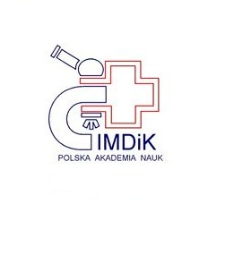
Object
Title: The Effect of Hypothermia on Electric Impedance and Penetration of Substances from the CSF into the Periventricular Brain Tissue
Creator:
Klatzo, Igor ; Chou-Lu, Li ; Long, D. ; Mossakowski, Mirosław Jan (1929–2001) ; Bak, A. F. ; Parker, L. O. ; Rasmussen, L. E.
Date issued/created:
Resource type:
Publisher:
Place of publishing:
Type of object:
Abstract:
Lowering the temperature of the brain can affect it in either a beneficial or an adverse manner. The ability of mild hypothermia to reduce brain volume has been extensively used by neurosurgeons in alleviating increased intracranial pressure and cerebral edema. On the other hand, a number of adverse effects have been reported following cooling of the brain below 28°C. At these temperatures numerous clinical complications (such as cerebral edema or hypoxic brain injury) and experimental disturbances (such as a breakdown of the blood-brain barrier) have been reported (Brendel et al., 1966). A further elucidation of the basic changes due to lowering brain temperature appears to be of considerable importance.Hypothermia causes an increase in the electric impedance of brain tissue in the rabbit (Collewijn and Schade, 1962, 1964). This increase was thought to be a result of changed physical properties of the tissue since a similar change was found in electrolyte solutions at corresponding temperatures (Collewijn and Schade, 1962).Recently a series of experiments were designed in our laboratory (Li et al., 1966) for the study of physiological changes in the brain under hypothermia. These experiments show that impedance changes recorded from the grey matter at temperatures above 20°C were in accordance with temperature coefficients of the blood serum and NaCl solution. Below this temperature, the changes were greater than those recorded from serum and electrolyte fluid. These observations probably reflect changes in the electrolyte and extracellular compartments, as has been reported to occur in asphyxia (Van Harreveld, 1957).It was then conjectured that alteration in such basic properties of nervous parenchyma should influence penetration of various substances from the cerebrospinal fluid (CSF) (Davson and Spaziani, 1962). After crossing the ependymal barrier the substances can migrate further in several ways. Generally, the inert, extracellular compounds, such as inulin, may spread primarily by passive diffusion through extracellular spaces (Rail et al., 1962), whereas, an active transport mechanism has been implicated in penetration of diverse substances such as histamine (Draskoci et a!., 1960), amino acids(Lajtha, 1962; Levin et al., 1966), and albumin (Klatzo et a!., 1964).The purpose of the present study is to correlate some of the electrophysiological data obtained after brain cooling with observations on periventricular penetration of substances, selected for their association with either diffusion or active transport.
Relation:
Volume:
Start page:
End page:
Detailed Resource Type:
Format:
Resource Identifier:
Language:
Rights:
Licencja Creative Commons Uznanie autorstwa 4.0
Terms of use:
Zasób chroniony prawem autorskim. [CC BY 4.0 Międzynarodowe] Korzystanie dozwolone zgodnie z licencją Creative Commons Uznanie autorstwa 4.0, której pełne postanowienia dostępne są pod adresem: ; -
Digitizing institution:
Instytut Medycyny Doświadczalnej i Klinicznej im. M. Mossakowskiego Polskiej Akademii Nauk
Original in:
Biblioteka Instytutu Medycyny Doświadczalnej i Klinicznej im. M. Mossakowskiego PAN
Projects co-financed by:
Access:
Object collections:
Last modified:
Feb 1, 2022
In our library since:
Sep 4, 2019
Number of object content downloads / hits:
332
All available object's versions:
https://rcin.org.pl/imdik/publication/104283
Show description in RDF format:
Show description in RDFa format:
Show description in OAI-PMH format:
Objects Similar
Czernicki, Zbigniew ed. by [et al]
Mossakowski, Mirosław Jan (1929–2001)
Mossakowski, Mirosław Jan (1929–2001)
Mossakowski, Mirosław Jan (1929–2001)
Mossakowski, Mirosław Jan (1929–2001)
Mossakowski, Mirosław Jan (1929–2001)

 INSTYTUT ARCHEOLOGII I ETNOLOGII POLSKIEJ AKADEMII NAUK
INSTYTUT ARCHEOLOGII I ETNOLOGII POLSKIEJ AKADEMII NAUK
 INSTYTUT BADAŃ LITERACKICH POLSKIEJ AKADEMII NAUK
INSTYTUT BADAŃ LITERACKICH POLSKIEJ AKADEMII NAUK
 INSTYTUT BADAWCZY LEŚNICTWA
INSTYTUT BADAWCZY LEŚNICTWA
 INSTYTUT BIOLOGII DOŚWIADCZALNEJ IM. MARCELEGO NENCKIEGO POLSKIEJ AKADEMII NAUK
INSTYTUT BIOLOGII DOŚWIADCZALNEJ IM. MARCELEGO NENCKIEGO POLSKIEJ AKADEMII NAUK
 INSTYTUT BIOLOGII SSAKÓW POLSKIEJ AKADEMII NAUK
INSTYTUT BIOLOGII SSAKÓW POLSKIEJ AKADEMII NAUK
 INSTYTUT CHEMII FIZYCZNEJ PAN
INSTYTUT CHEMII FIZYCZNEJ PAN
 INSTYTUT CHEMII ORGANICZNEJ PAN
INSTYTUT CHEMII ORGANICZNEJ PAN
 INSTYTUT FILOZOFII I SOCJOLOGII PAN
INSTYTUT FILOZOFII I SOCJOLOGII PAN
 INSTYTUT GEOGRAFII I PRZESTRZENNEGO ZAGOSPODAROWANIA PAN
INSTYTUT GEOGRAFII I PRZESTRZENNEGO ZAGOSPODAROWANIA PAN
 INSTYTUT HISTORII im. TADEUSZA MANTEUFFLA POLSKIEJ AKADEMII NAUK
INSTYTUT HISTORII im. TADEUSZA MANTEUFFLA POLSKIEJ AKADEMII NAUK
 INSTYTUT JĘZYKA POLSKIEGO POLSKIEJ AKADEMII NAUK
INSTYTUT JĘZYKA POLSKIEGO POLSKIEJ AKADEMII NAUK
 INSTYTUT MATEMATYCZNY PAN
INSTYTUT MATEMATYCZNY PAN
 INSTYTUT MEDYCYNY DOŚWIADCZALNEJ I KLINICZNEJ IM.MIROSŁAWA MOSSAKOWSKIEGO POLSKIEJ AKADEMII NAUK
INSTYTUT MEDYCYNY DOŚWIADCZALNEJ I KLINICZNEJ IM.MIROSŁAWA MOSSAKOWSKIEGO POLSKIEJ AKADEMII NAUK
 INSTYTUT PODSTAWOWYCH PROBLEMÓW TECHNIKI PAN
INSTYTUT PODSTAWOWYCH PROBLEMÓW TECHNIKI PAN
 INSTYTUT SLAWISTYKI PAN
INSTYTUT SLAWISTYKI PAN
 SIEĆ BADAWCZA ŁUKASIEWICZ - INSTYTUT TECHNOLOGII MATERIAŁÓW ELEKTRONICZNYCH
SIEĆ BADAWCZA ŁUKASIEWICZ - INSTYTUT TECHNOLOGII MATERIAŁÓW ELEKTRONICZNYCH
 MUZEUM I INSTYTUT ZOOLOGII POLSKIEJ AKADEMII NAUK
MUZEUM I INSTYTUT ZOOLOGII POLSKIEJ AKADEMII NAUK
 INSTYTUT BADAŃ SYSTEMOWYCH PAN
INSTYTUT BADAŃ SYSTEMOWYCH PAN
 INSTYTUT BOTANIKI IM. WŁADYSŁAWA SZAFERA POLSKIEJ AKADEMII NAUK
INSTYTUT BOTANIKI IM. WŁADYSŁAWA SZAFERA POLSKIEJ AKADEMII NAUK
































